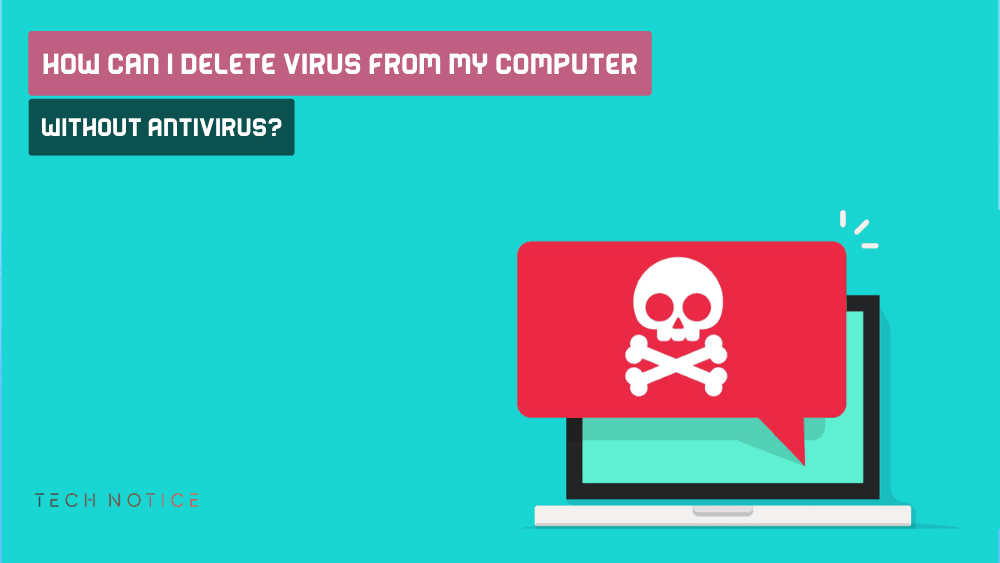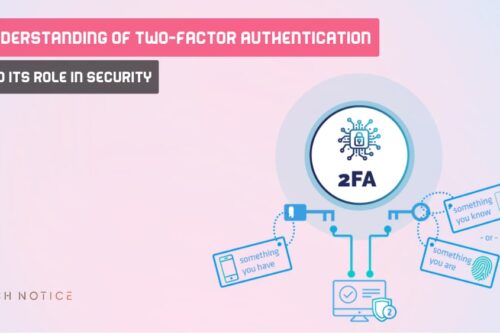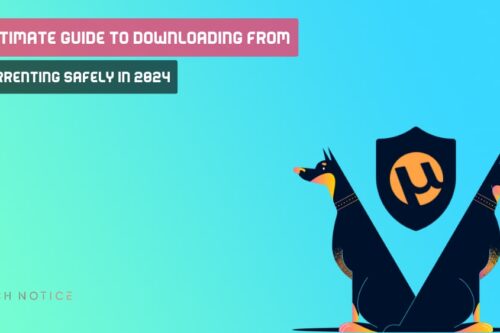As we currently see in the fast-paced world we live in, computers have become indispensable tools for work, entertainment, or performing any task.
Unfortunately, this increased reliance on technology also means an increased risk of encountering viruses, malware, hacks, and Engineering Attacks that can literally ruin your life.
Although antivirus software is a must-have solution, it cannot be relied upon all the time, and sometimes it may not be effective in removing certain types of malware.
In this guide, we will guide you to explore different ways to
Delete Virus From My Computer Without Antivirus.
Whether you are a skilled person or a newbie in the world of cybersecurity,
this article will provide you with valuable insights and practical steps to
protect your computer.
Why is scanning and cleaning viruses important?
Before we delve into the methods to Delete Virus From My Computer Without Antivirus, let us briefly understand why it is important to remove viruses from your computer immediately.
Computer viruses are malicious entities that replicate themselves and spread throughout your device.
Infecting your device with any type of virus can cause a wide range of problems, including:
- Data loss: Viruses can corrupt or delete your files, resulting in Permanent data loss.
- Performance degradation: Computers infected with viruses often suffer from slowdowns or frequent device crashes.
- Loss of privacy: Some viruses are designed to steal your personal information, such as passwords and financial data, and one of the worst of these viruses is ransomware.
- System damage: In many cases, viruses can permanently damage your computer hardware or operating system.
Given these potential consequences, it is clear that taking immediate action
to remove or prevent viruses before they become infected is essential.
What an antivirus Cannot Do?
Although antivirus app is the important tool for detecting and removing types of viruses, it is not a magic solution every time.
There are several limitations associated with antivirus software, which may fail to protect your device:
- Zero-Day Threats: Antivirus software relies on a database of known threats, and may not detect newly emerging viruses or “zero-day” threats until a new security software update is available.
- Heavy resource consumption: Some antivirus programs can be resource intensive, slowing down your computer’s performance.
-
False positives:Antivirus software may sometimes flag legitimate programs or files
as viruses, causing unnecessary alarms or crashes. - Cost: High-quality antivirus software often comes with a subscription fee, which may not be affordable for everyone, and even free antivirus software may not be good for protecting the device.
- Not 100% effective: Even the best antivirus software cannot guarantee complete protection, as some viruses are very advanced and can evade detection by antivirus software.
Due to these limitations, it will be important to have alternative methods at your disposal to Delete Virus From My Computer Without Antivirus or protect against virus infections.
How to Delete Virus From My Computer Without Antivirus?
Now that we have explained the importance of virus removal and the limitations of antivirus software, let’s explore different ways to remove Virus From My Computer Without Antivirus.
1. Boot into Safe Mode
Booting your computer into Safe Mode is often the first step in manually removing viruses.
In Safe Mode, your computer runs a small set of drivers and services, making it easier to identify and remove malware.
- Restart your computer: Click the Start button, select “Power”, then choose “Restart” while holding down the “Shift key”.
- Access advanced startup options: When your computer restarts, you will see a list of advanced startup options.
- Select “Troubleshoot,” then “Advanced Options,” and finally “Startup Settings.”
- Enable Safe Mode: Click the “Restart” button in the startup settings menu, your computer will restart in Safe Mode.
Once you enter safe mode, you can continue the virus removal process.
Start your PC in safe mode on Windows—Microsoft Support
2. Identify Suspicious Transactions
In Safe Mode, you can use the “Task Manager” to identify and terminate suspicious processes that may be associated with viruses.
Here’s how:
- Press Ctrl+Shift+Esc, this keyboard shortcut will open the “Task Manager”.
- Check CPU and Memory Usage: Sort processes by CPU and memory usage to identify any unusually high or suspicious activity.
- End suspicious processes: Right-click on any suspicious process and select “End Task”.
- Research the process: If you are not sure about a process, conduct an online search to determine if it is legitimate or potentially malicious.
By terminating suspicious processes, you can stop the virus from executing and causing further damage to your system.
Think of Task Manager as your PC’s detective, helping you uncover hidden threats.
3. Delete Malicious Files and Folders
computer.
-
Search for suspicious files: Use the Windows search function to search for files with suspicious names or extensions.
Common locations for malicious files may be in the “Downloads” or “Temporary” folders.
-
Review system files: Be careful when deleting suspicious files, especially system files.
It is necessary to search for any file that you are not sure about before deleting it.
- Empty the Recycle Bin: After deleting suspicious files, remember to empty your Recycle Bin to ensure they are permanently removed, as deleting these files will eliminate some virus on your computer.
4. Edit Registry Entries
Some viruses make changes to the Windows registry to ensure they continue
to operate undetected.
To remove these entries, follow these steps:
- Open the Registry Editor: Press “Win+R”, type “Regedit,” then press “Enter” to open the Windows Registry Editor.
-
Registry Backup: Before making any changes, it is necessary to back up your registry.
Click “File” > “Export” and save a backup copy in a safe place.
-
Navigate to suspicious keys: In Registry Editor, navigate to the following keys and delete any suspicious entries:
- HKEY_LOCAL_MACHINE\SOFTWARE
- HKEY_CURRENT_USER\SOFTWARE
- HKEY_LOCAL_MACHINE\SYSTEM\CurrentControlSet\Services
CAUTION: Be very careful when editing or deleting the registry, as deleting wrong entries can cause serious problems with the system, only remove entries that you are sure are related to the virus.
Editing the registry can be complicated and risky, so it is recommended to seek guidance from online resources or YouTube if you are not sure.
How to add, modify, or delete registry subkeys and values by using a .reg file –Microsoft Support
5. Take advantage of the system restore feature
System Restore is a built-in Windows feature that allows you to return your computer settings and system files to a previous state.
This feature is very useful if you notice that your device is behaving strangely, or that system settings have been changed without your permission.
In order for this feature to be activated, you must have a System Restore file, which is a file that you created at a time when your device was working without problems.
The System recovery file is similar to the backup file, but this file use to restore the system.
If you want to activate this feature, follow the following:
-
Access System Restore: Press Win+R, type “rstrui.exe,” and then press
Enter to open the System Restore utility. -
Choose a restore point: Select a restore point from a time when you knew
your computer was virus-free. -
Confirm Restore: Choose the restore file, confirm your selection, and
let Windows restore your system to the specified point.
System Restore can effectively remove viruses by returning your computer settings to a point before the infection occurred.
6. Use the Command Prompt
The Command Prompt is a powerful tool that allows you to execute commands and perform advanced tasks, including removing viruses.
Here’s how you can use it:
- Open Command Prompt as administrator: Find “Command Prompt” in the Start menu, right-click on it, and then select “Run as administrator.”
-
Use System File Checker (SFC): Type “sfc /scannow” at the command prompt and press Enter.
This command scans and repairs damaged system files that may have been changed by the virus.
-
Run Disk Cleanup: Type “cleanmgr” at the command prompt and press Enter to start Disk Cleanup.
This prompt helps remove unnecessary files, including potential virus remnants.
The Command Prompt gives you greater control over your system, allowing you
to target and eliminate virus-related issues.
7. Update your operating system and software
Old operating systems and software are vulnerable to security breaches, which viruses can exploit.
Companies and software owners strive to release periodic security updates to reduce the risk of malware infection.
Make sure your operating system and all installed software are up-to-date:
- Windows Update: Go to Settings > Update & Security > Windows Update and click Check for Updates.
- Software updates: Regularly check for updates to your web browsers, productivity software, and other applications.
By updating your system and software, you can patch known vulnerabilities that
viruses can exploit to enter your device.
Read About:What Is The Most Effective Way To Detect And Stop Social Engineering Attacks?
9. Educate yourself about safe computing practices
Prevention is often the best cure when it comes to viruses or hacking.
Educating yourself on security best practices to reduce the risk of future infection is the best way to protect your devices from potential viruses or hacks:
- Be careful with email: Avoid opening email attachments from unknown senders, and be wary of phishing emails.
- Download files: Only download software and files from reputable sources, avoid cracked or pirated software or torrenting website.
- Use strong passwords: Create Safe And Strong And Unique Passwords for your online accounts to prevent unauthorized access, and it is preferable to use password manager programs to save your passwords.
- Enable Firewall: Make sure your computer’s firewall is enabled to block incoming threats.
- Incognito browsing: It is a good idea to use VPNprograms while browsing to hide your identity on the Internet.
- Regular backups: It is important to create regular backups of your important data and system point file to restore them in the event of a virus attack.
These are the most important tips for protecting your device, and by following proactive protection habits, you can further reduce your exposure to viruses.
Conclusion
Removing viruses from your computer without antivirus software is not only possible, but also a valuable skill to have in your digital toolkit.
We agree, at some point you will need an antivirus program, because virus programs have become smarter and will not predict through which door they will enter your device.
So remember, prevention is key, so following proactive protection tips and keeping your system updated will go a long way in keeping your device away from viruses.
I believe that after this article, you can confidently protect your digital world against the potential threat of computer viruses or hacking programs.
















